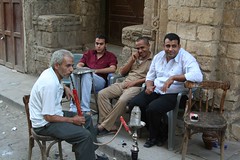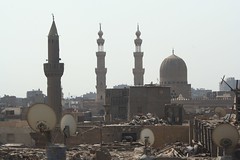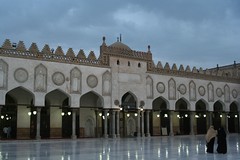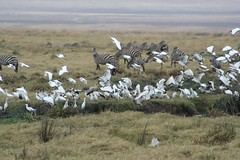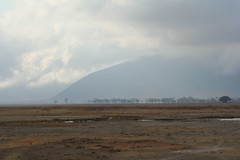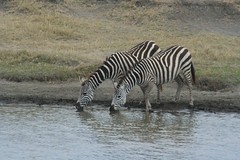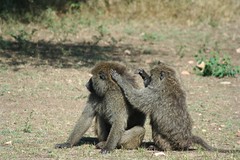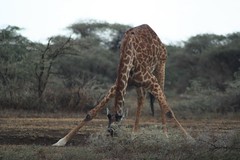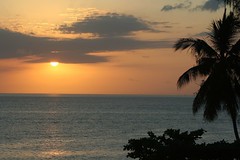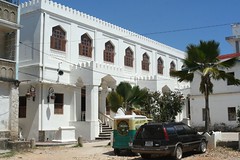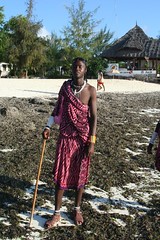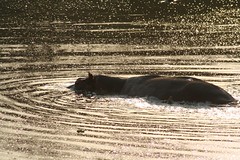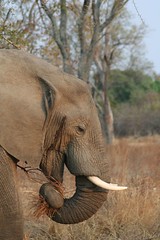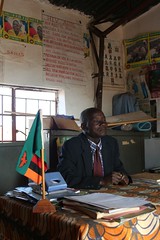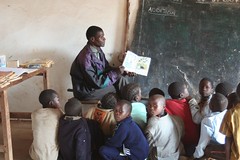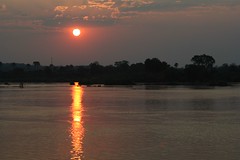“Hello mister, what’s your name?” the dark man wearing a white galabiyya asks me from across the street. I ignore him; he runs across and walks with us.
“Hello, what country?” he asks again, and this time, from an unacknowledged instinct to be polite to people who talk to me, I answer, half-avoiding his gaze:
“Romania.”
“Ah, Romania, good country,” he says, clearly overcome by the joy of meeting a Romanian. “Gheorghe Hagi!” he clamors with a sudden burst of exuberance. He stares at me with deep friendliness, as if by naming the one thing he knows about my country, the name of a famous football player, he has established an unbreakable bond between us. “Come to my papyrus shop, I give you good price, for you only, from Romania! Hey, why you leave? you want t-shirt?... Welcome to Egypt!”
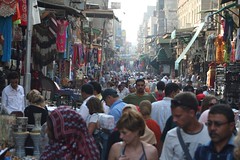
Click on pic to see slideshow
or here to access the Cairo set
And so it goes… Felucca rides, scarves, souvenirs, henna tattoos, tea and spices, tour guides and taxi rides – all can be had in Cairo at any time of day – and night as well – if you only have the stomach and the nerves to negotiate and deal with the constant hassle every tourist is subjected to. You meet people in Cairo more than you would like to; they talk to you first, and they usually start their attempts at conversation with intrusive questions that easily become tiring and annoying for the tourist looking for a quiet stroll through the anonymity of the crowded streets. “What’s your name?” or “Where you from?” are favorite starters. If the baiting works and you answer, oftentimes you will find out that they have a brother who lives in your town (if you’re from “Amrika”) or a very good friend from your country (if you’re from “Rumania”). And then, almost invariably, they want to sell you something… You have arrived in Cairo fresh and eager to explore the streets and ready to delve into the local culture – soon you become wary, suspicious and unwilling to talk to anybody, and when people who are actually interested in meeting a foreigner talk to you, you spurn them, you become monosyllabic, and you keep your guard up until it becomes clear that they don’t want to sell you papyrus or ask for baksheesh…
Never mind that papyrus has all but disappeared from Egypt and all you may get from them is painted banana leaves – they will still ask 10 times more than their ware is worth, but to their credit the vendors are always open to negotiating. Sadly, most western tourists have never bargained for anything in their life and get gypped with style, paying sums that Egyptian buyers would only laugh at. Even with our cunning bargaining skills, honed by the school of six months of travel, we still pay more than Egyptians for certain wares and services; we know it and that’s all right – but we won’t be taken for fools. Yet of all troubles, dealing with taxi drivers in Cairo (and in all Egypt) is the worst. Taxis are unmetered and traditionally fares aren’t negotiated ahead, so you just have to know the right price to pay as you leave – and the cabbie will still yell at you that you owe him double. And if you don’t have change for a 20 pound bill, you’re in it for a long shot – the driver will tell you very convincingly in a mix of Arabic and English that 20 Egyptian pounds is actually the right price for your trip. It’s usually a quarter of that. Better travel by metro if you can.
Being out in the streets of Cairo for too long can feel oppressive for many first-time travelers to Egypt. The crushing mass of humanity pushing and shoving from all sides, the permanent hassling by the store touts, the gratuitous requests for baksheesh coming from adults and kids alike (even in places where there are obvious “no tips” signs in English), and the mad, uninterrupted car traffic may easily get very stressful, and can turn a day out to town into a stifling ordeal, leaving the hapless tourist longing for their dark, air-conditioned hotel room. Lonely Planet guide book authors seem to love the worn-out cliché “bustling city” – if this adjective applies to Cairo, then its use should be banned in any other context.
All life in this metropolis seems to unfold in the streets. Its buildings look too dilapidated to entice anyone to spend any time inside their walls. The suburbs are made of rows upon rows of brick and concrete multi-story buildings that look half-built and forgotten. Some floors have windows, some do not, and their gaping holes peek sadly at the street. It seems as though everybody is building their own floor to their liking and the flats are in different degrees of habitation. The old, historic section of town, known as “Islamic Cairo,” a major stop on the tourist circuit, is nothing but one giant pile of rubble. Except for a few thriving mosques, every other building seems to be falling apart, and most top floors have already crumbled. The garbage is piled up high on the walls of the side-streets and in gutters along the road, and seems to have become a permanent fixture of the neighborhoods, to the point that some tourists will not hesitate to label Cairo the dirtiest city they have ever seen. The modern downtown, built from the beginning of the 19th century onward, doesn’t fare much better – its once glitzy and gorgeous office and residential buildings, a blend of European and local architectural styles, now stand in a forlorn state of disrepair, dirty and peeling, a mere shadow of their former glorious looks. Some enterprising flat owners - like the hotel we stayed at in the busy heart of downtown - have taken matters into their own hands and did some façade painting. Most often, the effect is comical and accentuates the poor state of the building – a ribbon of fresh yellow paint, with clumsily hand-drawn edges, between two darker, dirtier floors. The new coat only goes as far as the hand and the tool of the painter could extend from the balcony. Beyond that… it’s somebody else’s business.
But as things invariably end up when one travels, I found that the most interesting side of Cairo is its people. There are few words that could describe the furious coming and going on Talat Harb street at night. People cover the long boulevard from one end to the other and seem to consider cars as just another sort of pedestrian, neither yielding in front of them nor completely acknowledging their presence and the permanent honking. Many young men stroll leisurely arm-in-arm, a very unusual and confusing attitude for the American visitor, not used with such close, friendly contact between males, except is some particular, unequivocal context. “Walking ‘engage’ is very, very low-class,” says Murad, my Egyptian friend that I went pub-crawling with in Alexandria, a few days later. “It’s sad that I have to use the word ‘class’, but that’s what we consider it here.” I don’t know where they all go; there aren’t any bars around, so they must be just enjoying a walk in the city, getting some cheap eats, drinking coca-cola and ogling the girls.
Women of all ages walk around showing no other skin than their face and hands, covering their heads with scarves matching the colors of their outfits, their makeup or their cell phones. The covering of the hair is apparently a recent phenomenon in this secularized but overwhelmingly Muslim country, likely a combination between a social turn to a more religious life (some say, sponsored by the unofficial “godfathers” of the country, the Saudis) and simple peer pressure. Either way, this makes the few women who are not veiled (non-conformist Muslims, local Coptic Christians or foreigners) look even more conspicuous. Walking with Angela is a permanent invitation to unsubtle stares and dim-witted, ever-repeating childish jeers: “beautiful wife!”, “lucky man!”, “how many camels?” (trading camels for a woman is a Bedouin custom) they shout while we pass them hand in hand. They are annoying but not threatening. In fact, I have never felt safer than in Cairo - day or night - since I left home.
The mornings are quiet. They have finally all gone to sleep. From my hotel room balcony on the 5th floor, I look at the deserted street. There are few cars, and honking is unnecessary. The city is mine, at last. That’s when I think I’m going to go take a walk.
Published from Luxor. At last, I'm posting stories from the country I'm in.


